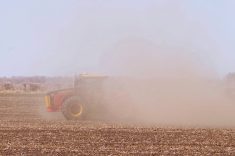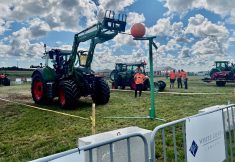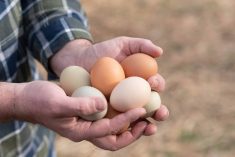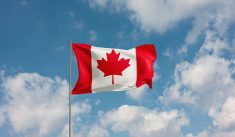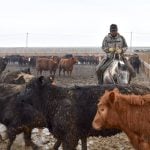A drought forced the federal and Saskatchewan government to reach an agreement on AgriStability – but is it a sign of what’s to come?
Near the start of August, the two governments agreed to allow Saskatchewan producers early access to the 2021 payments they are entitled to.
The two ministers of agriculture involved, Marie-Claude Bibeau and David Marit, put out a joint press release outlining how the move would allow producers better access to cash.
As we’ve seen throughout the COVID-19 pandemic, negative forces can bring competing factions together.
Read Also

The great food summit adventure
Alberta Farmer columnist Lee Hart attended the Food Leadership Summit in Calgary, where about 400 ag industry players gathered for the new annual conference.
In this instance, the drought more or less demanded co-operation between the conservative Saskatchewan Party politicians running the province and the Liberals running Ottawa.
Apparently though, it will take more than a drought or global pandemic for the two to truly get on the same page over AgriStability.
Changes to the program have long been debated.
In 2020, Bibeau offered to continue splitting the bill of the program 60-40 with the provinces, while increasing the overall cost of AgriStability by making it easier for producers to access and paying them more when they receive a payout.
After more than a year of negotiations, provinces agreed in March with Ottawa to remove the reference margin limit from AgriStability, but the prospect of further short-term changes remains dim.
Prairie provinces don’t want to pay more, and are investing resources to explore a Whole Farm Margin Insurance (WFMI) program, which would insure an entire farming enterprise for a margin decline from revenue fluctuations, expense changes or a combination of the two.
The Grain Growers of Canada is now openly pleading with governments to “put politics aside” and has encouraged acceptance of Ottawa’s offer.
In a press release, the group recognized provinces are facing financial challenges, but reiterated that investment in agriculture is “more than worth it.”
“This is a time where we must come together,” the group’s chair, Andre Harpe, said in a release. “We need everyone at the table to avoid playing politics and act quickly to provide an actionable and accessible support system for farmers.”
It’s tough for politicians to avoid playing politics, but it can be done.
And, outside of politics, it is tough to understand what else is at play here.
The federal government is willing to unlock $45 million to increase compensation rates to farmers. To make that happen, the provinces must agree to collectively contribute $30 million.
The Prairie provinces continue to prevent this from happening.
Any wholesale replacement of AgriStability favoured by Prairie provinces won’t become a reality until it can be ushered in with the next version of the federal-provincial agricultural funding agreement.
That isn’t happening until 2023.
Why not make the existing program better now, while you can?
Disasters, like droughts and pandemics, can force competing factions to work together.
The minor changes recently announced to AgriStability once again prove this can be the case, but further co-operation on the file isn’t likely.



